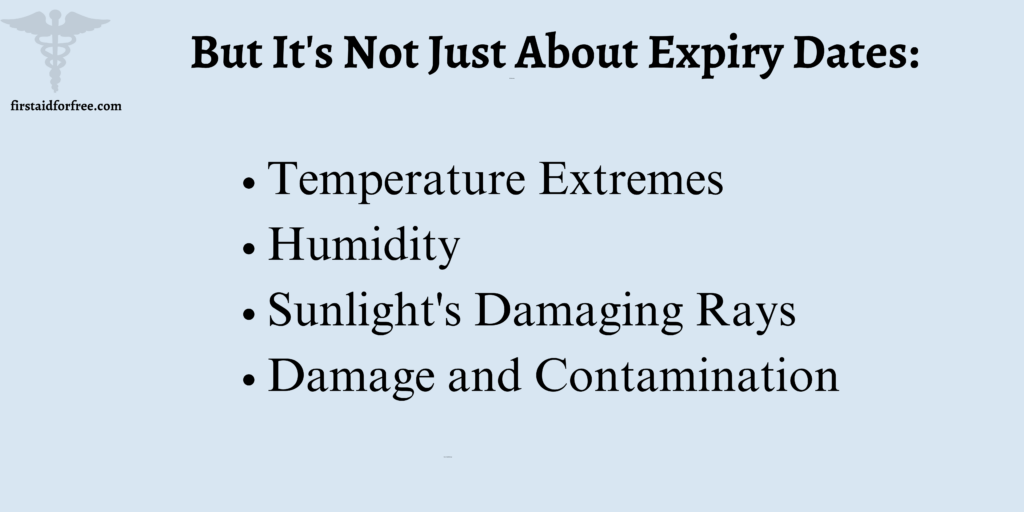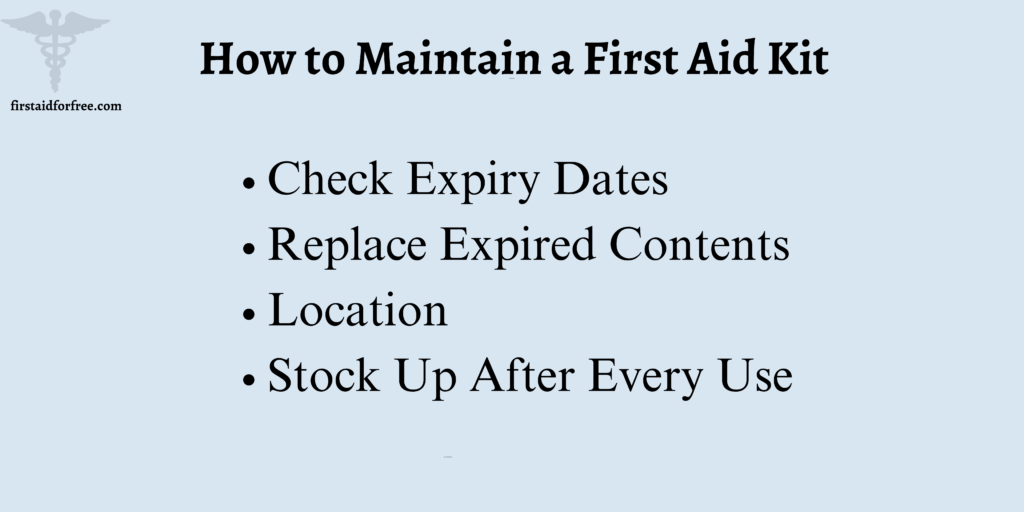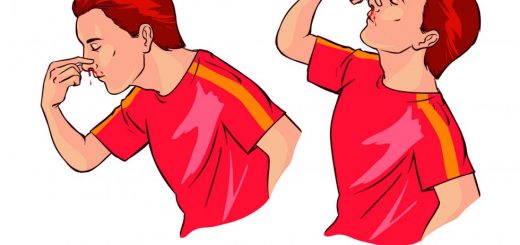Do First Aid Kits Expire? Everything You Should Know
After a headache, you fumbled for some pain relievers, only to find the bottle says “2022” in bold letters. Ever happened to you? Well, we’ve all been there.
Do you know a first aid kit can lose its effectiveness over time?
According to research, the majority of households have a first aid kit, yet a surprising number of those kits are either incomplete or contain expired items.
According to research, the majority of households have a first aid kit, yet a surprising number of those kits are either incomplete or contain expired items.
Fear not! This blog is your ultimate guide to first aid kit expiration.
We’ll discuss why those expiry dates matter, how to maintain your kit for emergencies and ensure you’re always prepared to handle those everyday bumps and bruises.
So, let’s learn about the topic ‘Do first aid kits expire?’ Grab your kit and come with us!
Do First Aid Kits Expire?
We understand the frustration and panic you feel when you reach for your first aid kit in a moment of need, only to find the bandages won’t stick or the antiseptic wipes have dried out.
This is exactly why understanding first aid kit expiration is crucial. While some supplies might seem like they’d last forever, others have a shelf life, and using them past their prescribed date can be risky.
Let’s know the reasons why some first aid supplies have expiration dates:
- Many bandages, dressings, and wound cleaning solutions are sterile, meaning they’re free of germs and bacteria. Over time, these products can become less effective at keeping wounds clean and also might increase the risk of infection.
- Some first aid kits might contain medications like pain relievers or antihistamines. These medications have specific formulas and dosages designed to be effective within a certain timeframe. Using expired medications could mean they’re less effective or even harmful.
- Adhesive bandages and tapes rely on their stickiness to stay in place and provide pressure to a wound. Expired adhesives might not hold properly and cause irritation.
But It’s Not Just About Expiry Dates:

Expiry dates are a crucial indicator, but they’re not the only thing to consider. Even non-expired supplies can become unusable if not stored properly. Here’s what else can affect your first aid kit’s effectiveness:
- Temperature Extremes: Extreme heat or cold can damage certain supplies. Like heat drying out ointments or cold making bandages stiff.
- Humidity: High humidity can cause some supplies, like adhesive bandages, to lose their stickiness or even mold to grow on gauze pads.
- Sunlight’s Damaging Rays: Direct sunlight can degrade certain medications and break down the materials in bandages.
- Damage and Contamination: A ripped package or a dropped container can compromise the sterility of a product. It’s best to discard anything that’s been damaged or contaminated.
By understanding these factors and taking proper care of your first aid kit, you can ensure it’s always ready to handle minor emergencies effectively.
How to Maintain a First Aid Kit

Having a first aid kit is great, but it’s only helpful if everything inside is in working order. Learn some easy maintenance practices:
1. Check Expiry Dates
Do regular checkups, ideally every 6 months or annually, to become familiar with everything that’s inside the kit. Most supplies will have expiry dates printed on the packaging. Look for them on things like:
- Bandages and dressings
- Antiseptic wipes and solutions
- Eyewash
- Medications (like pain relievers, if included)
2. Replace Expired Contents
Once you’ve identified the expired products (supplies past their prime), it’s time to replace them with new ones. Head to your local pharmacy or medical supply store to find replacements. Consider making a checklist of your kit’s contents or setting a reminder on your phone to avoid last-minute scrambling.
3. Location
Your first aid kit should be like a reliable friend, always there when you need it. Store your kit in a cool, dry place away from direct sunlight. It should be easily accessible in an emergency situation but out of reach of children or pets.
Ideal places can be cabinets in your kitchen, bathroom, or a designated spot in your car.
4. Stock Up After Every Use
You should know your first aid kit needs a post-mission restock. Even if you only used a few bandages, take a quick inventory and replace anything used to ensure your kit is fully prepared for the next emergency situation.
Consider including a small first-aid guide with basic instructions for treating minor injuries in your kit. This can be especially helpful if you or someone else is not sure what to do in an emergency.
The Importance of First Aid Kits
A first aid kit is a tiny medical toolbox ready to handle the little cuts, scrapes, burns, and aches we deal with every day. A well-stocked kit can:
- Stop the bleeding: Bandages and adhesive dressings can help control minor bleeding and promote faster healing.
- Fight infection: Antiseptic wipes and solutions can help clean wounds and reduce the risk of infection.
- Soothe the sting: Ointments and sprays can alleviate pain and discomfort from bug bites to sunburn.
Manage pain: Pain relievers like ibuprofen or acetaminophen can help reduce headaches, muscle aches, and menstrual cramps.
FAQs
Do all first aid supplies expire?
No, not all supplies expire. However, many crucial items like bandages, antiseptic wipes, and medications have expiry dates for sterility, potency, or adhesion.
How often should I check my first aid kit?
It’s recommended to check your first aid kit for expired items every 6 months to a year.
I finally cleaned out my first aid kit and realized most of the items were expired! Should I throw the whole kit away?
Not necessarily! While expired items should be tossed, you can recover some components of your kit. Here’s what to do:
• Expired Items: Discard any expired medications, bandages, wipes, or other supplies with expiry dates. These may be harmful if used past their expiration date.
• Non-Expired Items: Review non-expired items for damage or contamination. If the packaging is ripped or the contents appear dusty or discolored, it’s best to replace them.
However, undamaged scissors, tweezers, or splinters that haven’t been exposed to moisture or extreme temperatures might still be okay to use.
• Replenish: Make a list of all the expired items you need to replace. Head to your local pharmacy to restock your kit with fresh supplies.
My kids are fascinated with the first aid kit. How can I keep them safe?
Children’s curiosity can sometimes be dangerous when it comes to first aid kits. Some tips to keep them safe:
• Store your first aid kit in a cool, dry place that’s out of reach for young children. High cabinets or shelves are ideal. Consider using a lockable container for extra security.
• Create a separate, child-safe first aid kit for minor scrapes and bumps they might encounter. Talk to your children about the importance of first aid kits and why they shouldn’t play with the supplies.
Is it okay to use expired first aid supplies in an emergency?
Ideally, you should use non-expired supplies. However, in a true emergency and with no other options, an expired bandage might be better than nothing. But remember, expired supplies might be less effective or even increase the risk of infection.
Conclusion
We hope this article on “Do first aid kits expire” will help you understand everything.
By following these simple tips, you can transform your first-aid kit from a dusty box to a reliable friend. So stock up, store smart, and stay prepared!





